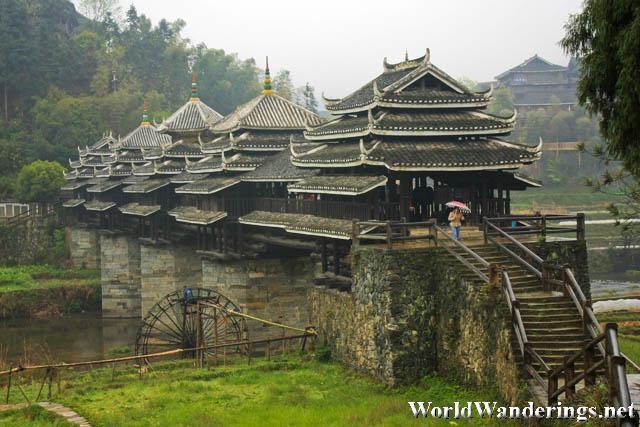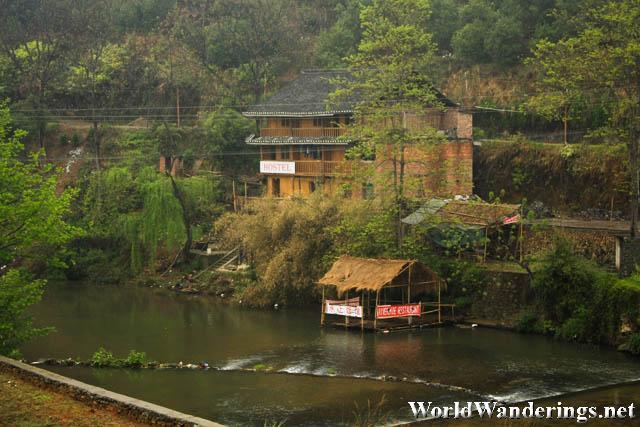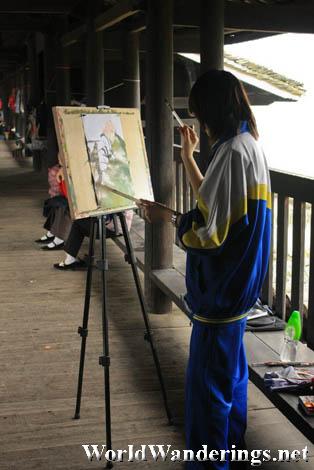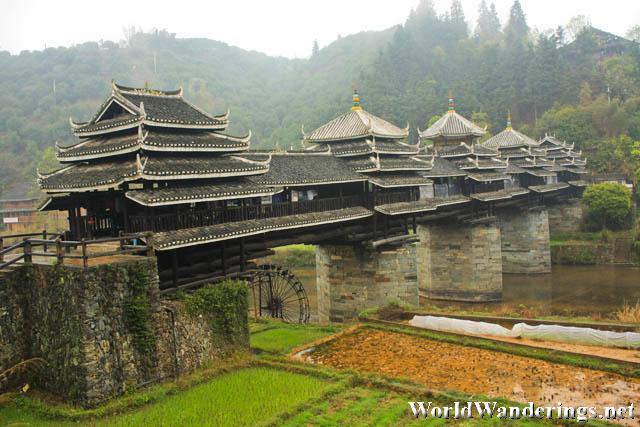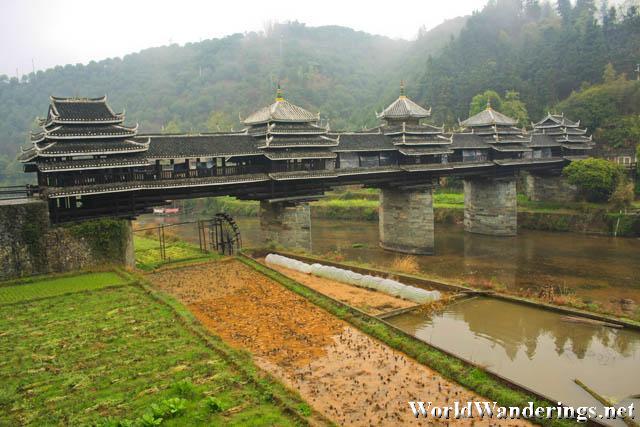I only spent the night at the Yalong Hotel in Longsheng county and the following morning I immediately set off to my original destination – the city of Longsheng 龙胜. The area of the hotel is right beside a creek which looked pretty clean. More importantly, the area itself is surprisingly known for its hot springs 温泉. I was aware of any volcanic activity in the area and I was surprise to find hot springs here. However, I needed to move on but even after getting my stuff out the hotel staff was nowhere to be seen. I could have easily slipped out and not paid if I wanted to, but I patiently waited for them to come back.
After paying the hotel, I got on a bus headed to Longsheng city itself. The trip still took a couple of hours since the road, as I can see now, horrible. There was construction going on all the way and it was really tough for the bus to pass through. There were times when the river was really close and I tought we would fall in. After a rugged ride, I finally arrived at Longsheng.
Not wasting any time, I headed to the bus station and checked the schedules of the buses. I needed to be back before 5pm to catch the last bus to my next destination. However, I still need to go somewhere else. I got on a bus to the city of Sanjiang 三江. The train from Huaihua 坏化 was supposed to pass right through this city but I didn’t get a ticket so I settled for the overnight bus.
In Sanjiang, I moved to yet another bus to the town of Linxi 林溪. The district of Chengyang is the location of a famous bridge called the Chengyang Yongji Wind and Rain Bridge 程阳永济风雨桥 or Chengyang Bridge 程阳桥 for short. The driver let me off at the entrance to the park where the bridge was. The bridge can already be seen even without entering the park and I would have been happy just seeing the bridge.
The bridge surprisingly was just recently made. “Recent” is a relative word in China, this bridge was built in the year 1916 by the Dong Minority Group 侗族 in the village of Maan 马安村. The pillars are made of solid stone but the rest of the bridge is made of wood. The reason it was called Wind and Rain Bridge is because of the five pavillions which span the bridge which essentially covers the entire bridge thus protecting pedestrians from the elements like wind and rain. The pavillions themselves are double eaved giving them a pagoda like appearance. Inside, the bridge is lined with hawkers selling souvenir items and tea. However, they weren’t very pushy.
There were old Dong women relaxing on the bridge itself oblivious to the tourist passing by. There was a even a young student painting the river scene. I have seen a lot of bridges in China, most of them were either modern or just downright primitive. But this one has got to be one of the most beautiful I have ever seen. Add to that the lack of tourists coming here and you’ve got yourselves a winner.
[xmlgm {http://www.worldwanderings.net/kml/ChengyangWindandRainBridge.kmz} zoom=14]
